
Deutsch-Chinesische Enzyklopädie, 德汉百科
 World Heritage
World Heritage

 UEFA European Championship 2020
UEFA European Championship 2020

 History
History
 ITU World Championship Series
ITU World Championship Series
 Silk road
Silk road

 Sport
Sport
 Triathlon
Triathlon
 Hungary
Hungary

 Cities founded by the Romans
Cities founded by the Romans

 World Heritage
World Heritage



ブダペストまたはブダペシュト(ハンガリー語: Budapest, 英語:[ˈbuːdəpɛst], [ˈbuːdəpɛʃt] or [ˈbʊdəpɛst]; ハンガリー語発音: [ˈbudɒpɛʃt] (![]() 音声ファイル))は、ハンガリーの首都であり、同国最大の都市である[2]。
音声ファイル))は、ハンガリーの首都であり、同国最大の都市である[2]。
「ブダペスト」として一つの市でドナウ川の両岸を占めるようになったのは1873年11月17日に西岸のブダとオーブダ、東岸のペストが合併してからである[3][4]。
ドナウ川河畔に位置し、ハンガリーの政治、文化、商業、産業、交通の一大中心都市で[5]、東・中央ヨーロッパ (en) では最大、欧州連合の市域人口では8番目に大きな都市である。しばしばハンガリーのプライメイトシティとも表現される[6]。
ブダペストの市域面積は525km2 (202.7 sq mi)[3]で、2011年の国勢調査によるブダペストの人口は174万人[7]、ピークであった1989年の210万人より減少している[8]。これは、ブダペスト周辺部の郊外化によるものである[9]。ブダペスト都市圏(通勤圏)の人口は330万人である[10][11]。
ブダペストの歴史の始まりはローマ帝国のアクインクムとしてで、もともとはケルト人の集落であった[12][13]。アクインクムは古代ローマの低パンノニア属州の首府となっている[12]。マジャル人がブダペスト周辺にやって来たのは[14]9世紀頃である。最初の集落は1241年から1242年にかけてモンゴルの襲来 (en) により略奪された[15]。15世紀に[16]町が再建されるとブダペストはルネサンス期の人文主義者文化の中心となった[17]。続いてモハーチの戦いが起こり、オスマン帝国による150年間の支配が続き[18]、18世紀、19世紀に新しい時代に入ると町は発展し繁栄する。ブダペストは1873年にドナウ川を挟んだ都市の合併が行われると、世界都市となる[19]。また、1848年から1918年の第一次世界大戦勃発まで列強に含まれたオーストリア=ハンガリー帝国のウィーンに続く第二の首都であった。1920年のトリアノン条約によりハンガリーは国土の72%を失い、ハンガリーの文化や経済をブダペストがすべてを占めるようになった。ブダペストはその大きさや人口で圧倒的に優位に立ち、ハンガリーの他の都市を小さく見せていた[20]。ブダペストはハンガリー革命 (1848年)や1919年のハンガリー評議会共和国、1944年のパンツァーファウスト作戦、1945年のブダペスト包囲戦、1956年のハンガリー動乱など数々の歴史的な舞台の場でもあった。
ブダペストはヨーロッパでも最も美しい街の一つで[2][21][22]、ドナウ川河岸を含め世界遺産が広がりブダ城やアンドラーシ通り、英雄広場は良く知られている。ブダペスト地下鉄1号線Millenniumi Földalatti Vasútはロンドン地下鉄に次いで世界で2番目に古い地下鉄である[21][23]。ブダペストの他のハイライトはセーチェーニ温泉を含めた80の温泉で[24]世界でも最大の地下熱水系統がある[25]。世界で3番目に大きなシナゴーグであるドハーニ街シナゴーグや国会議事堂などもブダペストの見所である。ブダペストの観光客数は年間270万人に上り、ロンドンにある民間調査機関ユーロモニターによればブダペストは世界で37番目に旅行者が多い観光地であるとされている[26]。
Budapest /ˈbuːdəpɛst/ is the capital and the most populous city of Hungary, and the tenth-largest city in the European Union by population within city limits.[9][10][11] The city had an estimated population of 1,752,704 in 2016 distributed over a land area of about 525 square kilometres (203 square miles).[12] Budapest is both a city and county, and forms the centre of the Budapest metropolitan area, which has an area of 7,626 square kilometres (2,944 square miles) and a population of 3,303,786, comprising 33 percent of the population of Hungary.[13][14]
The history of the city began when an early Celtic settlement transformed into a Roman town of Aquincum,[15][16] the capital of Lower Pannonia.[15] The Hungarians arrived in the territory in the late 9th century.[17] By the 11th century, Buda and Óbuda (Old Buda) became the names of their settlements on the west bank of the river Danube, with a formerly Slavic and then German settlement Pest on the opposite side.[3][18] The area was pillaged by the Mongols in 1241.[18] The Battle of Mohács in 1526 was followed by nearly 150 years of Ottoman rule.[19] After the reconquest of Buda in 1686, the region entered a new age of prosperity. Pest-Buda became a global city with the unification of Buda, Óbuda, and Pest on November 17, 1873, with the name 'Budapest' given to the new capital.[12][20] Budapest also became the co-capital of the Austro-Hungarian Empire,[21] a great power that dissolved in 1918, following World War I. The city was the focal point of the Hungarian Revolution of 1848, the Battle of Budapest in 1945, and the Hungarian Revolution of 1956.[22][23]
Budapest is a Beta+ global city with strengths in commerce, finance, media, art, fashion, research, technology, education, and entertainment.[24][25] It is Hungary's financial centre[26] and the highest ranked Central and Eastern European city on Innovation Cities Top 100 index,[27][28][29] as well ranked as the second fastest-developing urban economy in Europe.[30] Budapest is host to many major international organization's regional offices, including the United Nations and ICDT,[31] furthermore it is the headquarters of the European Institute of Innovation and Technology,[32] the European Police College[33] and the first foreign office of the China Investment Promotion Agency.[34] Over 40 colleges and universities are located in Budapest, including the Eötvös Loránd University, Semmelweis University and the notable Budapest University of Technology and Economics.[35][36] Opened in 1896,[37] the city's subway system, the Budapest Metro, serves 1.27 million, while the Budapest Tram Network serves 1.08 million passengers daily.[38]
Budapest is cited as one of the most beautiful cities in Europe,[9][39][40] ranked as "the world's second best city" by Condé Nast Traveler,[41] and "Europe's 7th most idyllic place to live" by Forbes.[42] Among Budapest's important museums and cultural institutions is the Museum of Fine Arts. Further famous cultural institutions are the Hungarian National Museum, House of Terror, Franz Liszt Academy of Music, Hungarian State Opera House and National Széchényi Library. The central area of the city along the Danube River is classified as a UNESCO World Heritage Site and has many notable monuments, including the Hungarian Parliament, Buda Castle, Fisherman's Bastion, Gresham Palace, Széchenyi Chain Bridge, Matthias Church and the Liberty Statue.[43] Other famous landmarks include Andrássy Avenue, St. Stephen's Basilica, Heroes' Square, the Great Market Hall, the Nyugati Railway Station built by the Eiffel Company of Paris in 1877 and the second-oldest metro line in the world, the Millennium Underground Railway.[39] The city also has around 80 geothermal springs,[44] the largest thermal water cave system,[45] second largest synagogue, and third largest Parliament building in the world.[46] Budapest attracts 4.4 million international tourists per year, making it a popular destination in Europe.[47]
Budapest (prononcé [by.da.ˈpɛst] , hongrois : Budapest [ˈbu.dɒ.pɛʃt] Écouter ; allemand : Budapest ou anciennement Ofen-Pesth) est la plus grande ville et la capitale de la Hongrie. Elle se situe en aval du coude du Danube entre le massif de Transdanubie et l'Alföld. Ses habitants sont les Budapestois (en hongrois, budapesti, -ek).
La ville actuelle est créée en 1873 par la fusion de Buda — alors capitale de la Hongrie — de Pest et d'Óbuda1. Elle a pour origine le site d'Aquincum2, un point de peuplement celte3 devenu capitale de la Pannonie inférieure pendant l'époque romaine3. Les Magyars arrivent dans la région au IXe siècle. Leur premier point d'implantation est pillé par les Mongols en 1241-12424. La ville est reconstruite et devient l'un des centres de la culture humaniste de la Renaissance5 au XVe siècle6. Après près de 150 ans de domination ottomane, elle poursuit son développement et connaît son apogée avec l'épanouissement de l'ère industrielle aux XVIIIe et XIXe siècles. Après la fusion de 1873 et l'accession de la ville au rang de seconde capitale de l'Autriche-Hongrie, Budapest atteint les proportions et les caractéristiques d'une ville mondiale7. Marquée par les différentes traces léguées par l'histoire, Budapest a notamment été l'épicentre de la révolution hongroise de 1848, de la République des conseils de Hongrie de 1919, de l'opération Panzerfaust en 1944, de la bataille de Budapest de 1945 et de l'insurrection de 1956.
Considérée comme l'une des plus belles villes d'Europe et comme la « perle » du Danube8,1,9, son panorama, le quartier du château de Buda, l'avenue Andrássy et le métropolitain du Millénaire figurent au patrimoine mondial de l'UNESCO8,10. Destination touristique importante, la ville attire plus de 4,3 millions de visiteurs par an11.
Plus grande ville du pays, elle en est le principal centre politique, culturel, commercial et industriel. Elle abrite le Parlement hongrois, les bâtiments ministériels et les ambassades du pays ainsi que les sièges sociaux des entreprises installées en Hongrie. Son ancien statut de cocapitale de l'Autriche-Hongrie lui confère un rayonnement important dans la Mitteleuropa. La partition du royaume de Hongrie à la suite du traité de Trianon en 1920 en fait une ville démesurée pour la Hongrie dans ses frontières actuelles. La macrocéphalie dont est atteinte la ville se concrétise par la convergence de la plupart des réseaux routiers et ferroviaires du pays en son centre et des écarts démographiques et économiques disproportionnés entre la capitale et la province12 (près de 20 % de la population hongroise est budapestoise). Avec ses 1 702 297 habitants13 (l'aire urbaine en compte 2 524 697), Budapest est également la ville la plus peuplée d'Europe centrale (si l'on exclut Berlin de l'Europe centrale). Elle en est également considérée du point de vue des échanges économiques comme une importante plaque tournante14. Budapest abrite le siège de l'Institut européen d'innovation et de technologie (IET)15.
Budapest (IPA: [ˈbudɒpɛʃt]; pronuncia italiana moderna: /ˈbudapest/[1]) è la capitale e la maggiore città dell'Ungheria.
Amministrata come un comune autonomo, costituisce inoltre il centro primario del Paese per la vita politica, economica e culturale; al 2016 conta 1 759 407 abitanti, mentre la popolazione residente nell'area metropolitana ammonta a oltre 3 300 000 persone.
Budapest nacque ufficialmente nel 1873 dall'unione delle città storiche di Buda e Óbuda, ubicate sulla sponda destra del Danubio, con l'abitato di Pest, situato sulla riva opposta del fiume e anch'esso di antiche origini; fino al 1918 fu una delle due capitali dell'Impero austro-ungarico, dissoltosi al termine della prima guerra mondiale.
Nel XXI secolo, Budapest è diventata una metropoli globale e si è affermata come una popolare destinazione turistica: nel 2011, secondo i dati forniti da Euromonitor International, la capitale ungherese è stata la 25ª città più visitata del mondo[2].
Budapest (![]() /ˈbudɒpɛʃt/ (?·i)) es la capital y ciudad más poblada de Hungría,2 así como su principal centro industrial, comercial y de transportes.3 La ciudad posee 1,74 millones de habitantes (2011),4 una disminución significativa respecto de los casi 2,1 millones con que contaba a mediados de los años 1980,5 que representan un quinto de la población total de Hungría. Es la ciudad más poblada de Europa central-oriental y la séptima de la Unión Europea. La ciudad ocupa una superficie de 525 km²6 y su área metropolitana cuenta con una población de 2,38 millones de habitantes. Budapest se convirtió en una única ciudad cuando ocupó las dos orillas del río Danubio, unificando las ciudades de Buda y Óbuda, en la orilla oeste, con Pest, en la orilla este, el 17 de noviembre de 1873.67
/ˈbudɒpɛʃt/ (?·i)) es la capital y ciudad más poblada de Hungría,2 así como su principal centro industrial, comercial y de transportes.3 La ciudad posee 1,74 millones de habitantes (2011),4 una disminución significativa respecto de los casi 2,1 millones con que contaba a mediados de los años 1980,5 que representan un quinto de la población total de Hungría. Es la ciudad más poblada de Europa central-oriental y la séptima de la Unión Europea. La ciudad ocupa una superficie de 525 km²6 y su área metropolitana cuenta con una población de 2,38 millones de habitantes. Budapest se convirtió en una única ciudad cuando ocupó las dos orillas del río Danubio, unificando las ciudades de Buda y Óbuda, en la orilla oeste, con Pest, en la orilla este, el 17 de noviembre de 1873.67
La historia de Budapest comenzó con Aquincum, originalmente un asentamiento celta89 que se convirtió en la capital romana de Panonia Inferior.8 Los húngaros llegaron al territorio en el siglo IX.10 Su primer asentamiento fue saqueado por los mongoles en 1241-42.11 La ciudad restablecida se convirtió en uno de los centros de la cultura del Renacimiento humanista en el siglo XV.1213 Después de la batalla de Mohács y tras casi 150 años de dominio otomano,14 el desarrollo de la región entró en una nueva era de prosperidad en los siglos XVIII y XIX, y Budapest se convirtió en una ciudad global después de la unificación de 1873.15 También se convirtió en la segunda capital de Austria-Hungría, una gran potencia que se disolvió en 1918. Budapest fue el punto focal de la revolución húngara de 1848, la República Soviética Húngara de 1919, la Operación Panzerfaust en 1944, la batalla de Budapest de 1945 y la Revolución de 1956.
Considerada como una de las ciudades más bellas de Europa,21617 Budapest cuenta con varios sitios que son Patrimonio de la Humanidad, entre los que se incluyen, a orillas del Danubio, el barrio del Castillo de Buda, la avenida Andrássy, la Plaza de los Héroes y el Metropolitano del Milenio, el segundo más antiguo del mundo.1618 Otros puntos destacados incluyen un total de 80 manantiales geotérmicos,19 el mayor sistema de cuevas de aguas termales del mundo,20 la segunda sinagoga más grande y el tercer edificio del Parlamento más grande del mundo. La ciudad atrae a alrededor de 4,3 millones de turistas al año, convirtiéndola en la 25.ª ciudad más popular del mundo, según Euromonitor.21
Budapest es, también, un importante centro financiero de Europa Central. La ciudad se situó tercera (de un total de 65 ciudades) en el Índice de Mercados Emergentes elaborado por Mastercard,22 y clasificada como la ciudad mejor habitable de Europa Central y Europa del Este por índice de calidad de vida según Economist Intelligence Unit.2324 También se clasificó como el "séptimo lugar idílico de Europa para vivir" por la revista Forbes,25 y como la novena ciudad más bella del mundo por UCityGuides.26 Es, también, la mejor ciudad de Europa Central y del Este en el índice Innovation Cities' Top 100.2728
Будапе́шт (венг. Budapest [ˈbudɒpɛʃt]) — столица Венгрии и самый крупный город страны. По численности населения, составлявшей на январь 2014 года 1,745 млн жителей[2], в Европейском союзе Будапешт занимает восьмое место. Город образовался в 1873 году в результате слияния нескольких венгерских городов: Пешта, расположенного на восточной стороне реки Дунай, Буды и Обуды, занимающих западный берег Дуная.
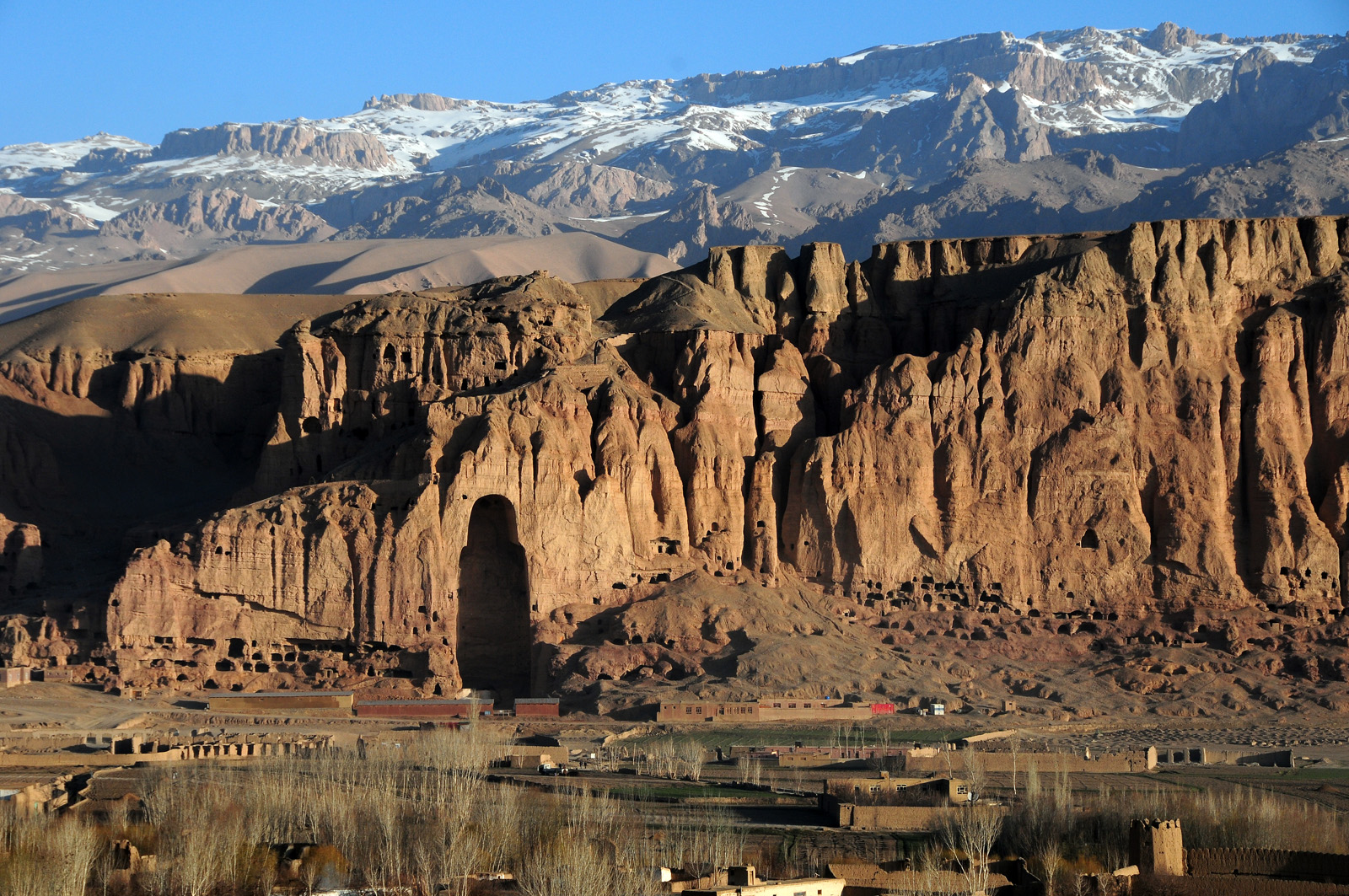
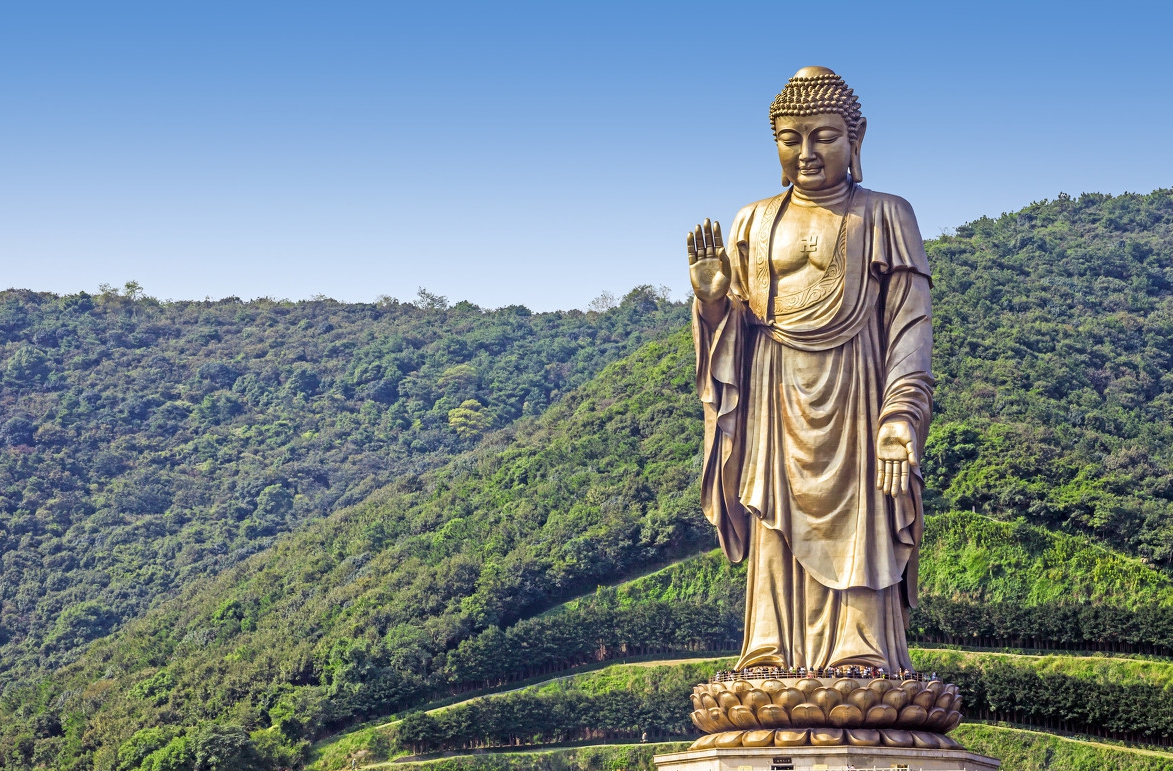
佛教,起源于远古印度迦毗罗卫国(现在的尼泊尔)的太子悉达多·乔达摩(佛号释迦牟尼)在大约西元前6世纪对于佛弟子所开示的教导,后发展为宗教。全世界约有5亿佛教信众[1][2][3][4][5][6][7][8],常被视为世界三大宗教之一。在世界上尤其是对于东亚、中亚、东南亚和南亚地区曾具有广泛的影响。世界佛教各派别占佛教信徒的人口比例是:大乘佛教56%,上座部佛教38%,密宗6%。[9]
佛,意思是“觉者”[10]。佛又称如来、应供、正遍知、明行足、善逝、世间解、无上士、调御丈夫、天人师、世尊[11]。佛教重视人类心灵和道德的进步和觉悟。按照佛教的观点,人和其他众生一样,沉沦于苦迫之中,并不断的轮转生死。惟有断除无明的人才能出三界脱离轮回。悉达多·乔达摩就在35岁时成佛,并对众人宣扬他所发现的道理。佛教信徒修习佛教的目的即在于从悉达多所悟到的道理里,看透生命和宇宙的真相,最终超越生死和苦、断尽一切烦恼,得到究竟解脱。
佛教(英语:Buddhism)起源于古印度河流域迦毗罗卫国(今尼泊尔和印度边界间靠近尼泊尔)的王室太子悉达多·乔答摩于35岁修道成为释迦牟尼佛后在约前6世纪对弟子开示的“苦的止息、趣(趋)向涅槃”的教导内容,后宗教化,为现代世界三大宗教之一。对于世界上,尤其是东亚、东南亚文化具有深刻的影响,此外在中亚和南亚地区文化曾具有广泛的影响,现正在向欧洲、非洲、北美洲发展。佛教经历史发展,通过南、北两条传播途径,现代存在南传上座部佛教、北传大乘佛教两条支脉,其中大乘佛教又分为显宗(汉传佛教的主要内容)和密宗(藏传佛教的主要内容),故也有上座部、汉传佛教(大乘)、藏传佛教(金刚乘)三分法[注 1],各脉又有诸多宗派;南传主要为以声闻乘阿罗汉果为最高圣位,北传则追求在未来世成佛,皆称为涅槃。
教主为释迦牟尼佛,广义上也包含三世诸佛,一般尊称其为佛陀,义为觉者、觉悟者。佛教的本意是佛陀的教育,而不是指拜神佛的宗教,比起其他宗教教义更像是一种哲理,这是由于最原始的佛教概念中,没有明确指出神明的定义甚至反对迷信,因而后世的佛教尽管有些神话故事与规范,始终带有一些不可知论的气息,佛陀认为不应该浪费时间思考对灭苦没帮助的概念。佛教在历史上曾对世界文化传播做出了不可磨灭的贡献。佛教重视人类心灵和道德的进步和觉悟。按照佛教的观点,人和其他六道众生一样,沉沦于苦迫之中,并不断的轮转生死,惟有断除无明的人才能出三界离轮回。教徒修习佛教的目的即在于追随并实践悉达多所觉悟的四圣谛,看透生命和宇宙的真相,断尽一切烦恼,最终超越生老病死和所有苦结束轮回,得到究竟解脱进入涅槃。
2010年普查显示全世界约有5亿佛教徒[1][2][3][4][5][6][7][8]。21世纪世界佛教徒的人口分布是:汉传佛教地区67.3%(3.6亿人),南传佛教地区28%(1.5亿人),藏传佛教地区3.4%(1800万人),亚洲以外地区1.3%(700万人)。[9]
Der Buddhismus ist eine Lehrtradition und Religion, die ihren Ursprung in Indien hat. Sie hat weltweit je nach Quelle zwischen 230 und 500 Millionen[1][2][3] Anhänger – und ist damit die viertgrößte Religion der Erde (nach Christentum, Islam und Hinduismus). Der Buddhismus ist hauptsächlich in Süd-, Südost- und Ostasien verbreitet. Etwa die Hälfte aller Buddhisten leben in China.[4]
Die Buddhisten berufen sich auf die Lehren des Siddhartha Gautama, der in Nordindien lebte, nach den heute in der Forschung vorherrschenden Datierungsansätzen im 6. und möglicherweise noch im frühen 5. Jahrhundert v. Chr. Er wird als der „historische Buddha“ bezeichnet, um ihn von den mythischen Buddha-Gestalten zu unterscheiden, die nicht historisch bezeugt sind. „Buddha“ (wörtlich „Erwachter“) ist ein Ehrentitel, der sich auf ein Erlebnis bezieht, das als Bodhi („Erwachen“) bezeichnet wird. Gemeint ist damit nach der buddhistischen Lehre eine fundamentale und befreiende Einsicht in die Grundtatsachen allen Lebens, aus der sich die Überwindung des leidhaften Daseins ergibt. Diese Erkenntnis nach dem Vorbild des historischen Buddha durch Befolgung seiner Lehren zu erlangen, ist das Ziel der buddhistischen Praxis. Dabei wird von den beiden Extremen selbstzerstörerischer Askese und ungezügeltem Hedonismus, aber auch generell von Radikalismus abgeraten, vielmehr soll ein Mittlerer Weg eingeschlagen werden.[5]
仏教(ぶっきょう、旧字体: 佛敎、サンスクリット: बौद्धधर्मः 、英語: Buddhism)は、インドの釈迦(ゴータマ・シッダッタ、もしくはガウタマ・シッダールタ、ゴータマ・シッダールタ)を開祖とする宗教である。キリスト教・イスラム教と並んで、日本では出版点数の多い宗教の一つに数えられる[注釈 1]。仏陀(仏、目覚めた人)の説いた教えである[注釈 2]。
その教義は、苦しみの輪廻から解脱することを目指している。原因と結果の理解に基づいており、諸々の現象が縁起するとされる。
仏教は仏、その教えである法、その実践者である僧からなる三宝を中心に組織されている。実践における戒定慧の三学は、戒律、心を集中する禅定、ものごとの縁起を観察する智慧であり、後ろ二つは併せて止観とも呼ばれる仏教の瞑想法である。実践にて重要となる能力は六波羅蜜や八正道のように、いくつかの方法でまとめられている。
紀元前450年ごろに、インドで開始された仏教は、今では初期仏教として研究されている。釈迦は、他の苦行などの実践者の主張であるアートマン(真我)の存在を否定して無我とした。釈迦の死後数百年で部派仏教が生まれ、大きく大衆部と上座部とに、さらに細かく分かれたが、今なお大きな勢力として続いているのは南伝した上座部仏教であり、初期の教えを模範としている。紀元前の終わりごろには北伝し日本にも伝わることになる大乗仏教が開始され、教義や団体は多彩に発展しており、禅の瞑想法の様々、チベットや日本の真言宗に残る密教、一方で浄土信仰のような信仰形態の変化など多様である。なお、『日本書紀』によれば仏教が伝来したのは飛鳥時代552年(欽明天皇13年)である(日本の仏教)。
Buddhism (/ˈbʊdɪzəm/, US also /ˈbuːd-/)[1][2] is the world's fourth-largest religion[3][4] with over 520 million followers, or over 7% of the global population, known as Buddhists.[web 1][5] Buddhism encompasses a variety of traditions, beliefs and spiritual practices largely based on original teachings attributed to the Buddha and resulting interpreted philosophies. Buddhism originated in ancient India as a Sramana tradition sometime between the 6th and 4th centuries BCE, spreading through much of Asia. Two major extant branches of Buddhism are generally recognized by scholars: Theravada (Pali: "The School of the Elders") and Mahayana (Sanskrit: "The Great Vehicle").
Most Buddhist traditions share the goal of overcoming suffering and the cycle of death and rebirth, either by the attainment of Nirvana or through the path of Buddhahood.[6][7][8] Buddhist schools vary in their interpretation of the path to liberation, the relative importance and canonicity assigned to the various Buddhist texts, and their specific teachings and practices.[9][10] Widely observed practices include taking refuge in the Buddha, the Dharma and the Sangha, observance of moral precepts, monasticism, meditation, and the cultivation of the Paramitas (virtues).
Theravada Buddhism has a widespread following in Sri Lanka and Southeast Asia. Mahayana, which includes the traditions of Pure Land, Zen, Nichiren Buddhism, Shingon and Tiantai (Tendai), is found throughout East Asia.
Vajrayana, a body of teachings attributed to Indian adepts, may be viewed as a separate branch or as an aspect of Mahayana Buddhism.[11] Tibetan Buddhism, which preserves the Vajrayana teachings of eighth-century India, is practiced in the countries of the Himalayan region, Mongolia,[12] and Kalmykia.[13]
Le bouddhisme est une religion (notamment une religion d'État) ou, selon le point de vue occidental, une philosophie, voire les deux, dont les origines sont en Inde au Ve siècle av. J.-C. à la suite de l'éveil de Siddhartha Gautama et de son enseignement.
Le bouddhisme comptait en 2005 entre 230 millions et 500 millions d'adeptes1, ce qui en fait la quatrième religion mondiale, derrière (dans l'ordre décroissant) le christianisme, l'islam et l'hindouisme. L'historien des religions Odon Vallet mentionne que c'est « la seule grande religion au monde à avoir régressé au XXe siècle », en raison, notamment, des persécutions du bouddhisme en Chine et en Indochine par les régimes communistes2.
Le bouddhisme présente un ensemble ramifié de pratiques méditatives, de rituels religieux (prières, offrandes), de pratiques éthiques, de théories psychologiques, philosophiques, cosmogoniques et cosmologiques, abordées dans la perspective de la bodhi, « l'éveil ». À l'instar du jaïnisme, le bouddhisme est à l'origine une tradition shramana, et non brahmanique comme l'est l'hindouisme.
Les notions de dieu et de divinité dans le bouddhisme sont particulières : bien que le bouddhisme soit souvent perçu comme une religion sans dieu créateurn 1, la notion étant absente de la plupart des formes du bouddhismen 2, la vénération et le culte du Bouddha historique Siddhartha Gautama en tant que bhagavat joue un rôle important dans le Theravāda et également dans le Mahāyāna, dans lesquels il est un être éveillé ayant trois aspects ou manifestations (trikāya).
Il buddhismo o più comunemente buddismo [2] (sanscrito: buddha-śāsana) è una delle religioni[3][4] più antiche e più diffuse al mondo. Originato dagli insegnamenti dell'asceta itinerante indiano Siddhārtha Gautama (VI, V sec. a.C.), comunemente si compendia nelle dottrine fondate sulle Quattro nobili verità (sanscrito: Catvāri-ārya-satyāni).
Con il termine buddhismo si indica quindi quell'insieme di tradizioni, sistemi di pensiero, pratiche e tecniche spirituali, individuali e devozionali, nate dalle differenti interpretazioni di queste dottrine, che si sono evolute in modo anche molto eterogeneo e diversificato[5][6].
Sorto nel VI-V secolo a.C. come disciplina spirituale assunse nei secoli successivi i caratteri di dottrina filosofica e, secondo alcuni autori, di religione "ateistica"[7], intendendo con quest'ultimo termine non la negazione dell'esistenza degli dèi (deva), quanto piuttosto il fatto che la devozione ad essi, fatto comunque considerato positivo, non condurrebbe alla liberazione ultima. Altri considerano i libri sacri buddhisti (Canone pāli, Canone cinese e Canone tibetano) testi che non divinizzano Siddhartha Gautama Buddha Śākyamuni, ma Adi-Buddha o Buddha eterno, concetti buddhisti equivalenti a Dio.
A partire dall'India il buddhismo si diffuse nei secoli successivi soprattutto nel Sud-est asiatico e in Estremo Oriente, giungendo, a partire dal XIX secolo, anche in Occidente.
El budismo es una «doctrina filosófica y espiritual»23 no teísta perteneciente a la familia dhármica, derivada del brahmanismo y, según el vedismo, de tipo nástika.4 Comprende una variedad de tradiciones, creencias religiosas y prácticas espirituales principalmente atribuibles a Buda Gautama. El budismo se originó en la India entre los siglos VI y IV a. C., desde donde se extendió a gran parte del este de Asia y declinó su práctica en el país de origen durante la Edad Media. Existen dos ramas principales del budismo: Theravada (Escuela de los Ancianos) y Mahāyāna (El Gran Camino). El budismo es la cuarta religión más importante del mundo con más de 500 millones de adeptos, es decir el 7 % de la población mundial.
Las diferentes ramas del budismo difieren acerca de la exacta naturaleza del camino a la liberación; la importancia y el valor canónico de varias escrituras y enseñanzas, auto conocimiento y, especialmente, en las respectivas prácticas del budismo. Estas prácticas incluyen el Refugio Espiritual, la Samatha, Vipassana, Bodhicitta y las prácticas de la Vajrayāna del Estado de Generación y el Estado de Terminación. Fundamentalmente, el budismo contempla el estudio de las Escrituras budistas, observar los principios morales, renunciar a lo material, la práctica de la Meditación, cultivar la sabiduría, la bondad y la compasión, la práctica Mahāyāna de la Bodhicitta y las prácticas Vajrayāna del Estado de Generación y el Estado de Terminación.
En Theravada el objetivo final es lograr la cesación de las kleshas (estados destructivos mentales, incluyendo la ignorancia, la adhesión a lo material y la aversión) para lograr el sublime estado de Nirvana (espiritualidad) mediante la práctica de las Ocho Nobles Verdades (también conocido como el Camino del Medio), liberándose de esta forma del ciclo de sufrimiento y renacimiento. Therevada se sigue principalmente en Sri Lanka y el Sudeste de Asia.
La Mahāyāna incluye las tradiciones de Tierra Pura, Zen, Nichiren Budista, Budismo Shingon y Escuela Budista del Tiantai que tiene amplio seguimiento en todo el este de Asia. En lugar del Nirvana (espiritualidad), las enseñanzas de Mahāyāna se dirigen a lograr el estado de Buda (concepto) siguiendo el camino Bodhisattva, un estado donde se permanece en un ciclo de renacimiento para ayudar a otros a lograr su despertar al camino budista.
La Vajrayana cubre enseñanzas atribuidas a los indios Siddha y podría considerarse como una tercera rama del budismo o bien parte de la Mahāyāna. El budismo del Tíbet conserva las enseñanzas de la India del siglo VIII y se practica también en las regiones aledañas al Himalaya, en Mongolia y en Kalmukia. El budismo tibetano aspira al estado de Buda (concepto) o el llamado Cuerpo del Arco Iris ('ja' lus).
Derivado del movimiento Sramana, el budismo fue fundado en la India en el siglo VI a. C. por Buda Gautama2 y ha ido evolucionando hasta adquirir gran diversidad en escuelas y prácticas actuales. Se encontraron ciertas dificultades para definir el budismo en Occidente.
Будди́зм (санскр. बुद्ध धर्म, buddha dharma IAST; пали बुद्ध धम्म, buddha dhamma, «Учение Просветлённого»[1]; кит. 佛教 fójiào) — религиозно-философское учение (дхарма) о духовном пробуждении (бодхи), возникшее в середине 1-го тысячелетия до н. э. в Древней Индии. Основателем учения считается Сиддхартха Гаутама, впоследствии получивший имя Будда Шакьямуни[2].
Сами последователи этого учения называли его «Дхарма» (Закон, Учение) или «Буддхадхарма» (Учение Будды). Термин «буддизм» был создан европейцами в XIX веке[3]. Различные исследователи определяли буддизм по-разному, — как религию, философию, этическое учение, культурную традицию, цивилизацию, образование[4], как «науку о сознании»[5][6][4].
Буддизм — мировая религия, признанная многочисленными народами с разными традициями. По замечанию Е. А. Торчинова, «Без понимания буддизма невозможно понять и великие культуры Востока — индийскую, китайскую, не говоря уж о культурах Тибета и Монголии, пронизанных духом буддизма до их последних оснований»[3].

法隆寺,又称斑鸠寺,位于日本奈良县生驹郡斑鸠町,是圣德太子于飞鸟时代建造的佛教木结构寺院,据传始建于607年,但精确年代无从考证。法隆寺占地面积约18万7千平方米,寺内保存有大量自飞鸟时代以来陆续累积,被日本政府指定为国宝、重要文化财产的建筑及文物珍宝。
法隆寺分为东西两院,西院保存了金堂、五重塔;东院建有梦殿等,西院伽蓝是现存最古的木构建筑群。法隆寺建筑物群和法起寺共同在1993年以“法隆寺地域的佛教建筑物”之名义列为世界遗产。1950年时法隆寺从法相宗独立,现在是圣德宗的本山。
法隆寺,又称为斑鸠寺,位于日本奈良生驹郡斑鸠町,是圣德太子于飞鸟时代建造的佛教木结构寺庙,据传始建于607年,但是已无从考证。法隆寺占地面积约187000平方米,寺内保存有自飞鸟时代以来的各种建筑及文物珍宝,被指定为国宝・重要文化财产的文物约190类合计2300余件。法隆寺分为东西两院,西院保存了金堂、五重塔;东院建有梦殿等,西院伽蓝是世界上最古老的木构建筑群。法隆寺建筑物群和法起寺共同在1993年以“法隆寺地区佛教建造物”之名义列为世界文化遗产。法隆寺1950年从法相宗独立,现在是圣德宗的本山。
Der Hōryū-ji (jap. 法隆寺, dt. Tempel der Lehre Buddhas) ist ein buddhistischer Tempel in Nara in Japan. Auf seinem Gelände befinden sich die ältesten erhaltenen Holzgebäude der Welt und außerdem viele japanische Nationalschätze und Kulturgüter. Aufgrund dieser Tatsache wurde der gesamte Tempelbezirk vom UNESCO-Ausschuss für das Kulturerbe der Menschheit 1993 zum ersten japanischen Weltkulturerbe erklärt.
Die Geschichte des Hōryūji beginnt in der Asuka-Zeit etwa um 600 n. Chr., als der erkrankte Kaiser Yōmei das Gelübde ablegte, zum Dank für seine Gesundung einen Tempel und ein Buddhastandbild zu errichten. Dieses Gelübde konnte er aber nicht mehr einhalten, da er starb, kurz nachdem der genesen war. Sein Wunsch wurde so vom Kronprinz Shōtoku und der Kaiserin Suiko erfüllt, die im Jahre 607 den Tempel und die Statue errichteten. Der Tempel wurde Hōryūji oder auch Ikarugaji – nach seinem Standort auf dem Gelände des alten Ikaruga-Palastes – genannt. Bald darauf, im Jahre 670, wütete ein Feuer auf dem Tempelgelände, von dem das Nihonshoki berichtet, dass es „nicht ein einziges Gebäude“ verschont hätte. Diese Tatsache wird allerdings von Historikern sehr zweifelhaft beurteilt, da nachgewiesen werden kann, dass der Tempel nach seiner Errichtung über 400 Jahre eine Glanzzeit großer Traditionseinhaltung erlebte. Im Dezember 1993 schließlich wurde der gesamte Tempelbezirk als UNESCO-Weltkulturerbe deklariert und unter Denkmalschutz gestellt.(Quelle:http://www.kalkriese.de/H%C5%8Dry%C5%AB-ji.html)
Der Hōryū-ji (jap. 法隆寺, dt. „Tempel der Lehre Buddhas“) ist ein buddhistischer Tempel in der Stadt Ikaruga (Landkreis Ikoma) der japanischen Präfektur Nara. Er gehört zum UNESCO-Weltkulturerbe, und auf seinem Gelände befinden sich die ältesten erhaltenen Holzgebäude der Welt und außerdem viele japanische Nationalschätze und wichtige nationale Kulturgüter. Die Geschichte des Hōryū-ji beginnt in der Asuka-Zeit etwa um 600 n. Chr., als der erkrankte Kaiser Yōmei das Gelübde ablegte, zum Dank für seine Gesundung einen Tempel und ein Buddhastandbild zu errichten. Dieses Gelübde konnte er aber nicht mehr einhalten, da er starb, kurz nachdem er genesen war. Sein Wunsch wurde so von seinem Sohn, dem Kronprinzen Shōtoku, und der Kaiserin Suiko erfüllt, die im Jahre 607 den Tempel und die Statue errichteten. Der Tempel wurde Hōryū-ji oder auch Ikaruga-ji – nach seinem Standort auf dem Gelände des alten Ikaruga-Palastes – genannt. Bald darauf, im Jahre 670, wütete ein Feuer auf dem Tempelgelände, von dem das Nihonshoki berichtet, dass es „nicht ein einziges Gebäude“ verschont hätte. Diese Tatsache wird allerdings von Historikern als sehr zweifelhaft beurteilt, da nachgewiesen werden kann, dass der Tempel nach seiner Errichtung über 400 Jahre eine Glanzzeit großer Traditionseinhaltung erlebte.
法隆寺(ほうりゅうじ)は、奈良県生駒郡斑鳩町にある寺院。聖徳宗の総本山である。別名は斑鳩寺(いかるがでら、鵤寺とも)、法隆学問寺など[1]。
法隆寺は7世紀に創建され、古代寺院の姿を現在に伝える仏教施設であり、聖徳太子ゆかりの寺院である。創建は金堂薬師如来像光背銘、『上宮聖徳法王帝説』から推古15年(607年)とされる。金堂、五重塔を中心とする西院伽藍と、夢殿を中心とした東院伽藍に分けられる。境内の広さは約18万7千平方メートルで、西院伽藍は現存する世界最古の木造建築物群である。
法隆寺の建築物群は法起寺と共に、1993年に「法隆寺地域の仏教建造物」としてユネスコの世界遺産(文化遺産)に登録された。建造物以外にも、飛鳥・奈良時代の仏像、仏教工芸品など多数の文化財を有する。
Hōryū-ji (法隆寺, lit. Temple of the Flourishing Law) is a Buddhist temple that was once one of the powerful Seven Great Temples, in Ikaruga, Nara Prefecture, Japan. Its full name is Hōryū Gakumonji (法隆学問寺), or Learning Temple of the Flourishing Law, the complex serving as both a seminary and monastery.
The temple's pagoda is widely acknowledged to be the oldest wooden building existing in the world, underscoring Hōryū-ji's place as one of the most celebrated temples in Japan.[1][2] In 1993, Hōryū-ji was inscribed together with Hokki-ji as a UNESCO World Heritage site under the name Buddhist Monuments in the Hōryū-ji Area. The Japanese government lists several of its structures, sculptures and artifacts as National Treasures. A 2001 study of its shinbashira, the central wooden column almost suspended inside the Tō, concluded the building to be a century older than previously thought.
The temple was originally commissioned by Prince Shōtoku; at the time it was called Ikaruga-dera (斑鳩寺), a name that is still sometimes used. This first temple is believed to have been completed by 607. Hōryū-ji was dedicated to Yakushi Nyorai, the Buddha of healing and in honor of the prince's father.[2] Excavations done in 1939 confirmed that Prince Shotoku's palace, the Ikaruga-no-miya (斑鳩宮), occupied the eastern part of the current temple complex, where the Tō-in (東院) sits today.[3] Also discovered were the ruins of a temple complex which was southwest of the prince's palace and not completely within the present temple complex.[3] The original temple, named by modern historians and archaeologists Wakakusa-garan (若草伽藍), was lost, probably burned to the ground after being hit by lightning in 670. The temple was reconstructed but slightly reoriented in a northwest position, which is believed to have been completed by around 711.[4] The temple was repaired and reassembled in the early twelfth century, in 1374, and 1603.[5]
In 1950 the maintainers of the temple broke away from the Hossō sect. The owners currently call the temple the headquarters of the "Shōtoku" sect.[6]
After the long controversy ignited by architecture historian Sekino in 1905, the majority consensus view as of 2006 is that the current precinct is a reconstruction. The excavations in 1939 that uncovered the older temple site including architectural remains of a Kondō and a pagoda, are accepted as conclusive proof. The original complex, Wakakusa-garan, probably burned down, but there is still a debate as to whether a fire actually occurred in 670, as recorded in the Nihon Shoki, or whether there was another reason.[7]
Le Hōryū-ji (法隆寺?) est un temple bouddhique situé à Ikaruga, bourg de la préfecture de Nara au Japon.
Les bâtiments les plus anciens (le kondō, la pagode à cinq étages et la porte centrale) datent de la période Asuka (milieu du VIe siècle - 710) et sont considérés comme les plus anciennes constructions en bois du monde.
D'après les textes anciens, l'empereur Yōmei, en proie à la maladie, fit le vœu de bâtir un temple et d'y installer une statue de Bouddha afin d'obtenir la guérison. Il mourut peu après, mais l'impératrice et le prince héritier Shōtoku firent construire en 607 un temple nommé temple Ikagura (d'après le nom du lieu) ou Hōryū-ji (littéralement « Temple de la Loi Florissante »), conformément aux volontés de l'empereur1. Les premiers bâtiments formant le temple ont été construits par des artisans venus du royaume coréen de Baekje. Ils sont alignés suivant un axe nord-sud selon une tradition continentale2.
Même si un important incendie a peut-être détruit l'ensemble des bâtiments en 6701, le temple peut s'enorgueillir de quatorze siècles d'observance continue de la tradition.
Le 26 janvier 1949, des peintures murales, exemplaires de l'iconographie bouddhique japonaise et datant de la fin du VIIe siècle, prennent feu dans le bâtiment principal du temple, une œuvre architecturale classée trésor national depuis 18973,4. L'émoi suscité dans tout le pays, et même au-delà, par cette perte incite le législateur japonais à agir5,3. Le 30 mai 1950, le ministère de l'Éducation promulgue par ordonnance une loi sur la protection des biens culturels6,7.
Le temple est devenu en 1993 le premier site japonais inscrit sur la liste du patrimoine mondial1.
Hōryū-ji (法隆寺?) è un complesso templare buddista della città di Ikaruga-no-Sato, vicino a Nara, in Giappone.
Gli edifici più antichi (il Kondō, la pagoda a 5 piani e la porta centrale) risalgono al periodo Asuka e sono considerati le più antiche costruzioni in legno esistenti al mondo.
Secondo i testi antichi, l'imperatore Yōmei, molto malato, fece il voto di erigere un tempio, in cui avrebbe fatto mettere una statua di Buddha, per ottenere la guarigione. Poco dopo morì, senza aver potuto compiere il proprio voto, ma l'imperatrice Suiko ed il suo reggente, il principe Shōtoku fecero costruire, nel 607, il complesso templare chiamato Ikaruga (dal nome del luogo ove sorgeva) o Hōryū-ji (letteralmente «Tempio della Legge Fiorente»), secondo le intenzioni dell'imperatore.
Seppure un grave incendio, nel 670, avrebbe distrutto gran parte degli edifici, il complesso templare può vantare 14 secoli di ininterrotta osservanza della tradizione.
Nel 1993, è stato il primo sito giapponese ad essere riconosciuto patrimonio mondiale dell'umanità.
Hōryū-ji (法隆寺 lit. Templo de la Ley Floreciente?) es un templo budista localizado en Ikaruga, prefectura de Nara, Japón. Su nombre completo es Hōryū Gakumonji (法隆学問寺 lit. Templo de la Enseñanza de la Ley Floreciente?), debido a que este sitio sirve como un monasterio. El templo es muy conocido por poseer las edificaciones de madera más antiguas en el mundo.12 3 Debido a que tiene los templos más antiguos y más importantes, Hōryū-ji es el templo más venerado en Japón.4 En 1993, Hōryū-ji fue designado como Patrimonio de la Humanidad de la Unesco y el gobierno japonés lo ha nombrado como un Tesoro Nacional.
El templo fue originalmente comisionado por el príncipe Shotoku a la firma constructora Kongō Gumi; en aquella época se le llamaba "Ikaruga-dera"(斑鳩寺). El primer templo se completó en el año 607. El Hōryū-ji estaba dedicado a Yakushi, el Nyorai de la curación, y en honor al padre de Shotoku.[4]. Se ha confirmado, por medio de excavaciones en el sitio actual del templo, que el palacio del príncipe Shotoku ocupaba el extremo oriental de dicho sitio.[5]. También se descubrieron las ruinas de un complejo de templos al sur del palacio, y que no estaba comprendido dentro del complejo moderno. [6]. El templo fue alcanzado por un rayo y se incendió completamente en el año 670. Entre el 670 y el 700 el templo fue reconstruido siguiendo el estilo original pero reorientado en una posición al noroeste. [7]. El templo se reparó y reensambló a principios del siglo XII, en el año 1374 y en 1603. [8]. Se ha estimado que apenas 15 a 20 por ciento del Kondo contiene materiales de la reconstrucción original. [9].
El clan Shoga derrotó y exterminó sumariamente a la familia Shotoku en una rencilla por el poder. [10]. Como prueba del respeto que la familia rival tenía por el príncipe, se permitió la reconstrucción del templo, aún siendo propiedad de una familia rival y que había caído en desgracia. [11].
Posteriormente el templo se convirtió en un centro religioso importante del Budismo Hossō.
Aunque el punto de vista generalizado es que el templo actual fue reconstruido tras el incendio del 670, aún se debate si dicho incendio realmente tuvo lugar. Los detractores de la teoría del incendio apuntan a la ausencia de evidencia basándose en muestras del suelo del complejo, las medidas del templo que están basadas en el shaku Goguryeo en lugar del shaku Tang, y el estilo arcaico del templo, incongruente con los estilos arquitectónicos de inicios del siglo VIII. [12]. [13]. Por otro lado, quienes opinan que sí hubo tal incendio indican que el Nihon Shoki da cuenta de un gran incendio en el 670 en el que ni un solo edificio quedó en pie; la biografía del príncipe Shotoku habla de un incendio en el templo en el 610.[14]. [15]. Las excavaciones que descubrieron el sitio del templo más antiguo se aceptan como prueba definitiva de que existió un templo original que sufrió un incendio, y que el templo actual es una reconstrucción.[16].
Хорю-дзи (яп. 法隆寺 Храм процветающей дхармы) — буддийский храм в городе Икаруга, префектура Нара, Япония.
Полное название храма — Хорю Гакумон-дзи (法隆学問寺), то есть храм изучения процветающей дхармы, храм использовался не только как семинария, но и как монастырь. Храм считается древнейшей деревянной постройкой в мире.[1] Храм особенно почитается в Японии как самый старый храм.[2] Этот храм является одним из немногих храмов школы хоссо (соответствующей индийской философской школе йогачара, основатель школы — Досё). Храм входит в число семи крупнейших храмов юга.
Храм основал принц Сётоку, и он получил название Икаруга-дэра (斑鳩寺). Строительство, в котором принимали участие основатели компании Конго Гуми, было закончено в 607 году. Храм был посвящён Якуси, Будде Медицины, в честь отца принца[2]. Раскопки показывают, что принц Сётоку занимал часть дворца на современной храмовой территории[3]. Ранее комплекс находился к югу от дворца, а не на нынешнем месте[3]. Храм был поражён ударом молнии и полностью сгорел в 670 году. С 670 по 700 год храм был восстановлен, но переориентирован[4]. Несколько раз храм ремонтировали и пересобирали — в начале XII века, в 1374 и в 1603[5]. Считается, что только 15-20 % строений Кондо сохранили оригинальные материалы храма во время реконструкции[5].
Когда клан Сога победил род Сётоку, этот род был ликвидирован[6]. Однако Сога разрешил восстановить храм для мятежного и бессильного рода из уважения к принцу[6].
Позднее храм стал важнейшим центром школы хоссо. В 1950 году храм был передан Сётоку-сю, подшколе почитателей принца Сётоку в хоссо.


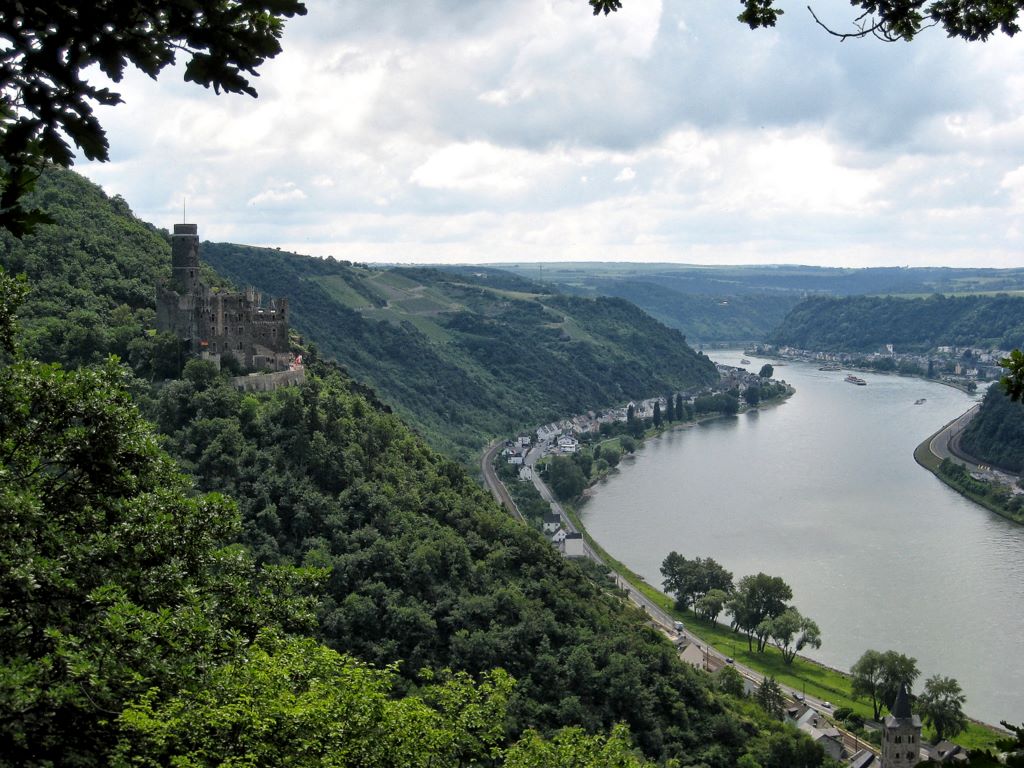
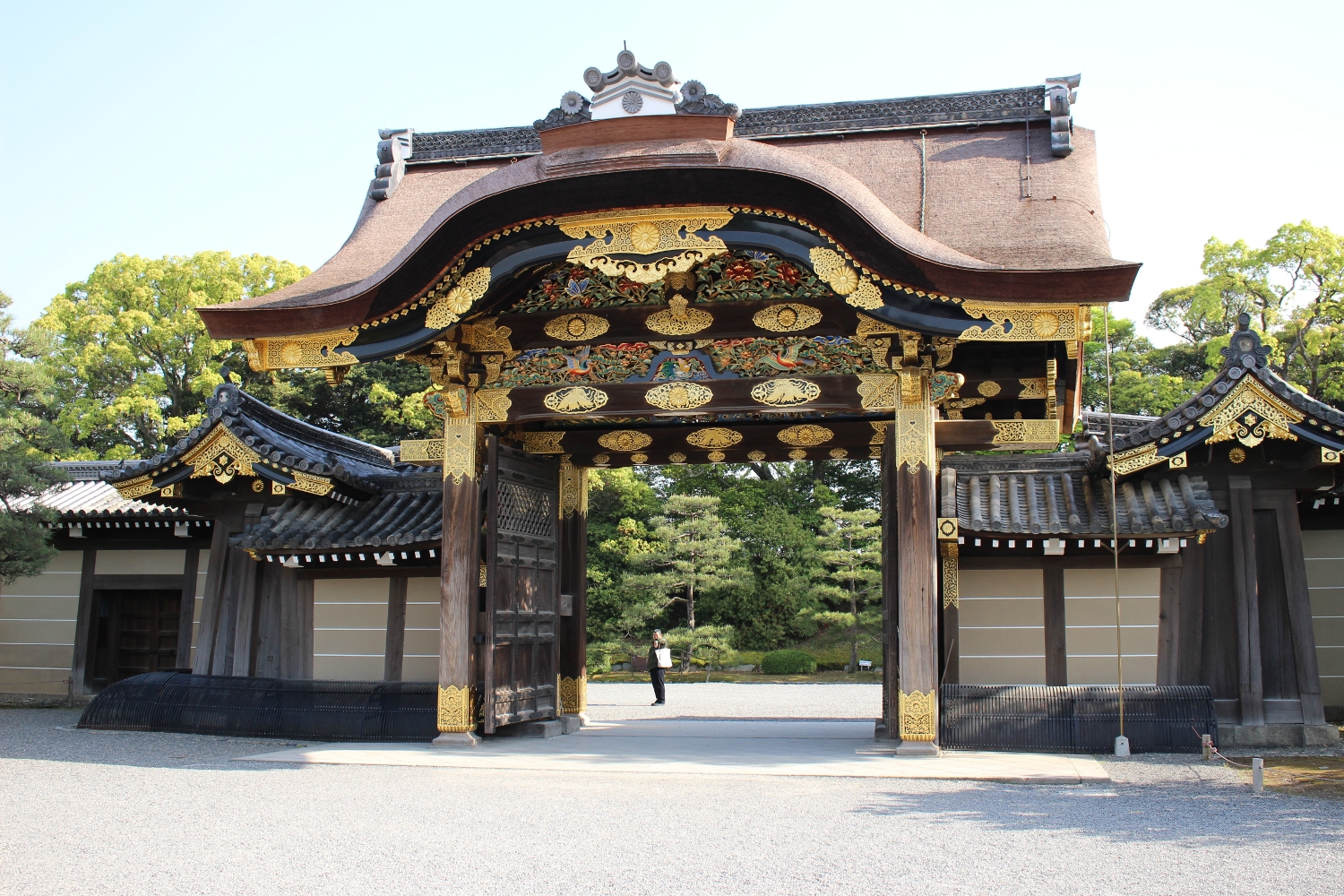
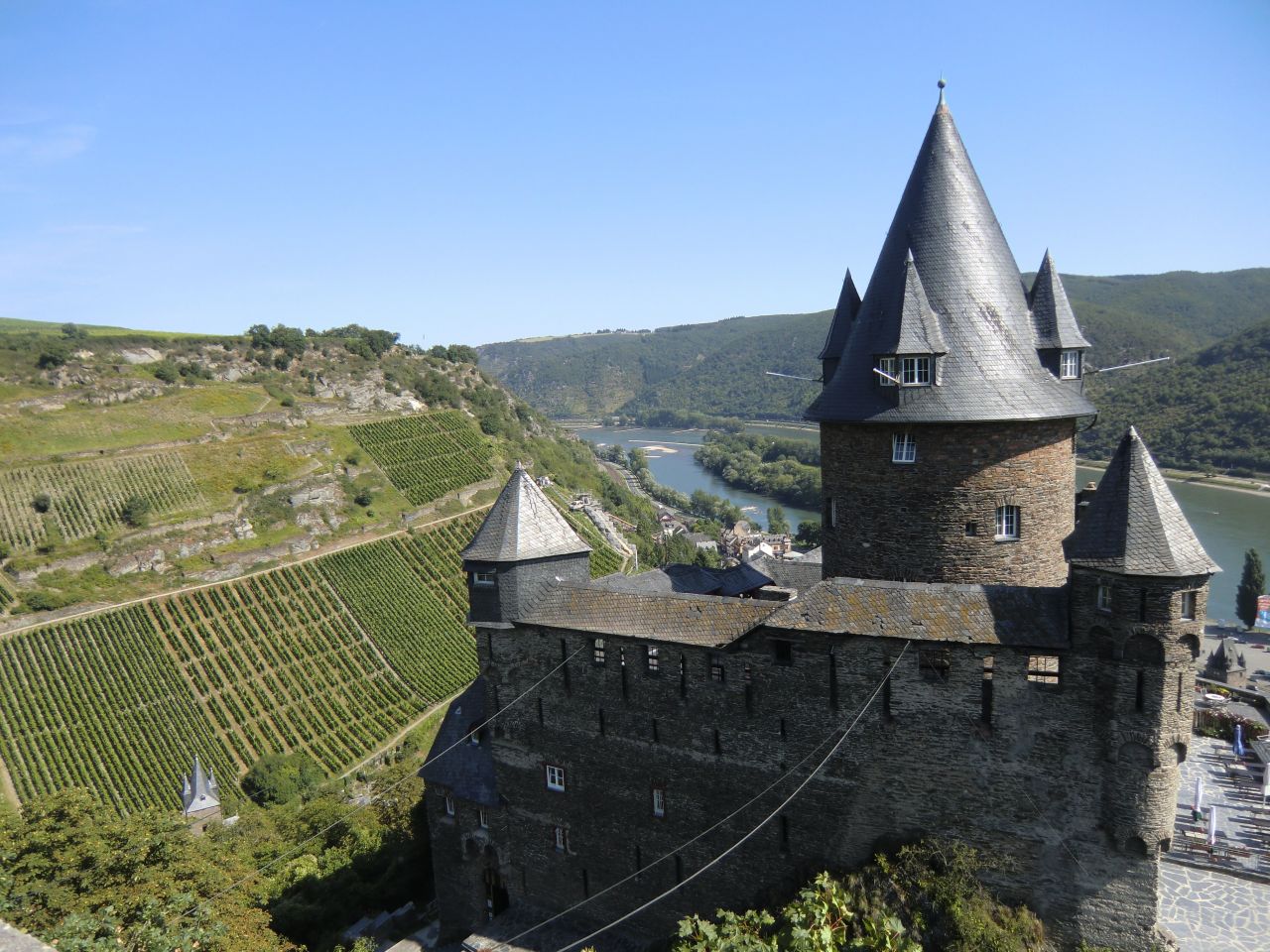

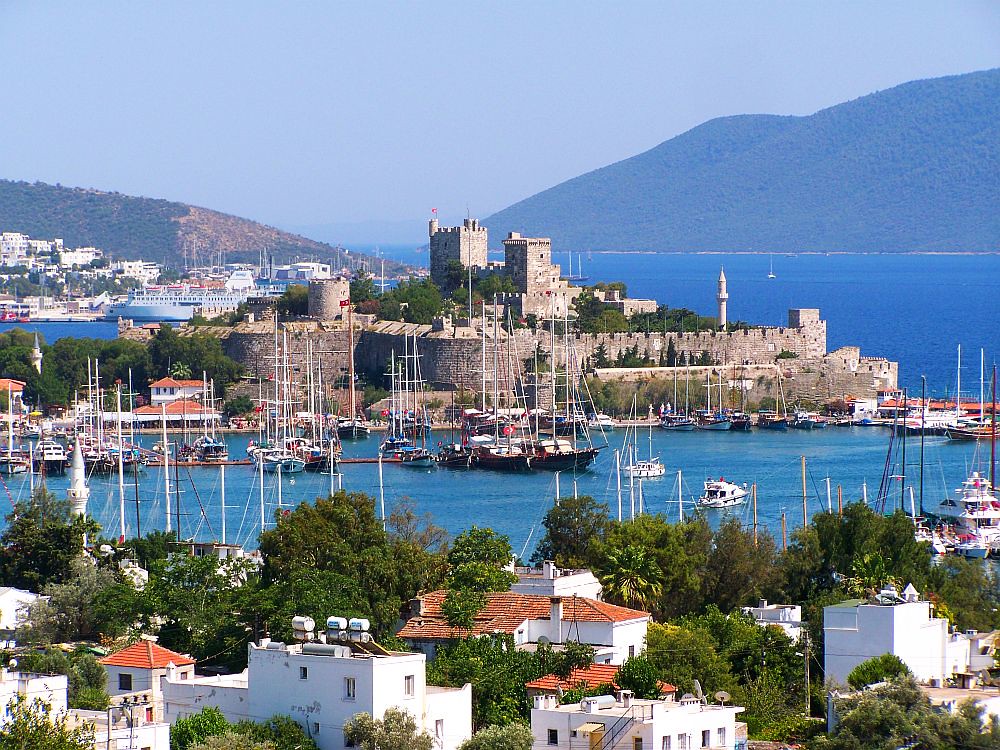
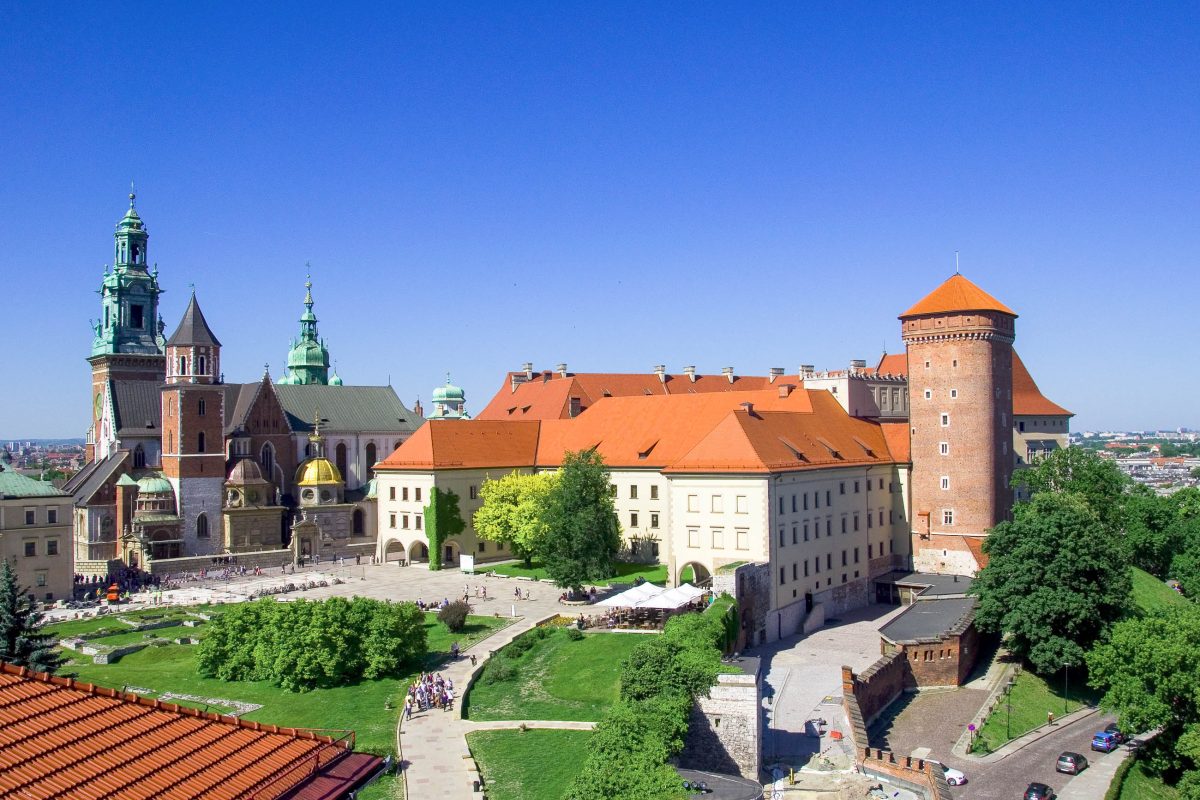
Der Wawel ist ein 228 m n.p.m. hoher Hügel aus Kalkfelsen, der sich im Zentrum Krakaus über die Weichsel an deren linkem Ufer erhebt. Auf ihm befindet sich die Burganlage der ehemaligen Residenz der polnischen Könige von 1040 bis 1795, der Krakauer Kathedrale und anderer historischer Bauten. Der Erstbebauung des Hügels im Frühmittelalter folgten im Laufe der Jahrhunderte immer mehr Gebäude. Zusammen mit der Krakauer Altstadt ist das Bauensemble Weltkulturerbe der UNESCO.
Die Bezeichnung Wawel wird auch für die Gebäude auf dem Hügel verwendet, alternativ zu genaueren Bezeichnungen wie Wawel-Burg oder Wawel-Schloss.
瓦维尔山(波兰语:Wawel,或 Wzgórze wawelskie)是波兰城市克拉科夫中位于维斯瓦河左岸的一座石灰岩小山,紧邻克拉科夫旧城区,海拔228米。自旧石器时代起,山上就有人类居住[1]。山上坐落着瓦维尔城堡和瓦维尔主教座堂,其中瓦维尔城堡曾是波兰王室的居所,因而使瓦维尔山成为中世纪波兰的象征。波兰王室和许多名人安葬在瓦维尔主教座堂。从1320年起,波兰君主在此加冕[2]。
 International cities
International cities
 Afghanistan
Afghanistan
 Religion
Religion
 Architecture
Architecture
 Art
Art
 Literature
Literature
 Music
Music
 Civilization
Civilization
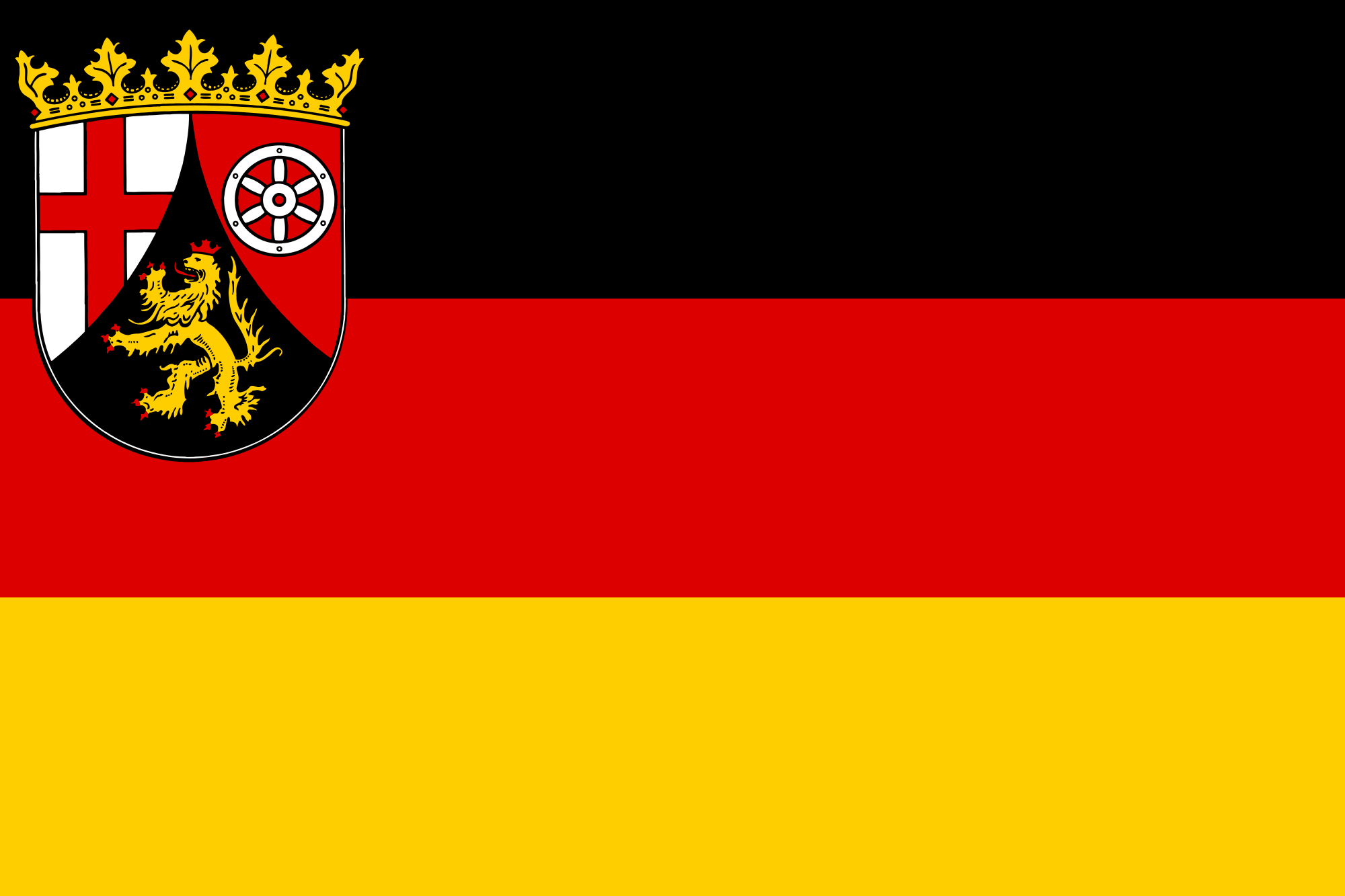 Rhineland-Palatinate
Rhineland-Palatinate
 Vacation and Travel
Vacation and Travel